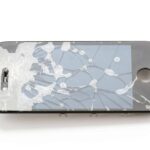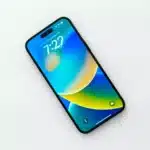
Dropping your iPhone in water can be a nerve-wracking experience and leave you wondering if your device will ever work again. But don’t panic, there’s a chance you can save it. In this article, we list everything you should and shouldn’t do when your iPhone gets wet. Let’s dive in and rescue that soggy phone!
7 Tips for Rescuing a Wet iPhone
Accidents happen, but quick action can often prevent permanent damage. If your iPhone gets wet, follow these steps to give it the best chance of recovering:
1. Unplug the Phone
The first thing you should do is carefully unplug your phone if it’s connected to a charger. Water and electricity don’t mix, and keeping the device plugged in can lead to severe internal damage. Disconnect it immediately to avoid short circuits that could damage your device.
2. Turn Off the Phone
If your iPhone is still on after getting wet, turn it off immediately. Keeping it powered on can cause it to short circuit, especially if water reaches the internal components. Press and hold the power button until the screen goes dark.
3. Wipe Away Excess Liquid
Use a microfiber cloth or a towel free of lint to dab away any visible moisture on the phone’s exterior. Avoid rubbing too hard, as this might push water deeper into the device. Focus on areas like the camera lens, buttons, and charging port.
4. Place in a Dry Area
Place your iPhone in a well-ventilated area to dry. Letting it air dry naturally is one of the safest ways to handle water exposure. You can also use a fan to help speed up the process, but avoid blowing air directly into the ports.
5. Wait to Charge
A wet iPhone and a charging cable are not friends. Wait until your iPhone is completely dry before plugging it in. Charging a wet device can cause irreparable damage to its internal components, including the battery and motherboard.
6. Avoid Heat Sources
Don’t try to dry your iPhone with a hair blow dryer or by placing it on a radiator. High heat can warp the internal components and damage the screen. Stick to room-temperature drying methods to prevent additional iOS issues.
7. Remove the Case and SIM Card
Take off the phone’s protective case (if it has one) and remove the SIM card to allow for better airflow. Cases can trap moisture, prolonging the drying process. The SIM tray is also an access point for water, so removing it can help with ventilation.
How to Make a Wet iPhone Dry Faster?
Although you can let your phone air-dry naturally, there are several methods you can use to speed up the process:
Stationary Fan
A fan is a simple and effective tool for drying your iPhone. Simply place the iPhone in front of a fan, ensuring it’s blowing at a moderate speed and is aimed directly at the device. The steady airflow will make the water evaporate faster, helping remove moisture from the outside and hard-to-reach internal areas of your iPhone.
Unlike drying methods involving heat, fans don’t pose any risk of damaging sensitive components. For the best results, place the fan and phone in a cool, dry room and leave them undisturbed for 1 to 2 days. This method can be particularly useful for devices with minimal water exposure and serve as a safe way to dry your iPhone.
Silica Gel
Silica gel packets are incredibly effective at absorbing moisture, making them an ideal solution for drying out a wet iPhone. These small packets are commonly found in new shoe boxes, electronics, or even certain food packaging. To use them, place your iPhone in a sealed container or ziplock bag with enough silica gel packets to surround the device.
It’s important to make sure the container or bag is airtight to create a moisture-free environment that will draw water out of your device. Leave the phone in the container for 1 to 2 days without disturbing it. Silica gel works more effectively than rice, as it won’t leave dust or debris behind and is far more absorbent.
Water Eject App
Water can get trapped in your iPhone’s speakers, resulting in distorted or muffled sound. Water eject apps use specific sound frequencies to push out trapped moisture from the speakers. These apps are designed to vibrate the speakers gently, helping dislodge tiny water droplets. While not a complete drying solution, this method is incredibly effective at restoring sound quality. You can pair this with other drying techniques to ensure your iPhone is fully functional.
Methods You Should Not Use to Dry Your Wet iPhone
Not all drying methods are created equal. Some commonly suggested solutions can do more harm than good, so it’s best to steer clear of these practices:
Hair Dryer or Compressed Air
Blasting your iPhone with a hair dryer or compressed air might seem like a quick fix, but it’s a risky move. The intense airflow can push water deeper into the device, potentially reaching areas that were previously unaffected. Compressed air, in particular, can cause droplets to lodge in hard-to-reach places, making the drying process even more challenging.
Furthermore, the heat from a hair dryer can warp or melt sensitive components, such as seals or circuit boards, leading to permanent damage. Instead of solving the problem, these methods might turn a minor mishap into an absolute nightmare.
Oven or Radiator
High heat is an iPhone’s biggest enemy, and placing your phone in an oven or on a radiator is one of the worst things you can do. The heat might dry the outside, but it could wreak havoc on the internal components and ruin your phone. A radiator would expose your phone to uneven and excessive heat, which could cause the warping of delicate components. These methods often do more harm than good and will likely leave you with a non-functional device.
Rice
The old trick of putting a wet phone in rice is what first comes to mind when trying to find a DIY phone-drying hack. However, rice isn’t nearly as effective as silica gel or other desiccants in absorbing moisture, and the tiny grains can lodge in your phone’s ports and crevices, causing problems when you try to charge or use it later. Additionally, rice won’t pull water from deep inside the phone, so if the internal components are wet, it isn’t a good option.
Repair Your Water-Damaged iPhone with Cell Phone Hospital
If you followed all these steps and your iPhone still won’t work properly, it’s time to call the professionals. Cell Phone Hospital specializes in iPhone repairs for water-damaged phones and offers quick, reliable services to get your device back in working condition. Don’t risk further damage by attempting risky DIY repairs. Trust our experts to assess the issue, repair damaged components, and ensure your iPhone functions like new. Visit our nearest location or call us today for a free consultation!
Frequently Asked Questions (FAQs)
Most newer iPhones come with an IP rating indicating water resistance, not waterproofing. For example, an IP68 rating means your phone can withstand submersion in water for 30 minutes. However, water resistance diminishes over time, so it’s best to avoid intentional exposure.
Unfortunately, Apple’s standard warranty does not cover water damage. However, if you have AppleCare+, accidental damage coverage may apply, subject to a service fee.





